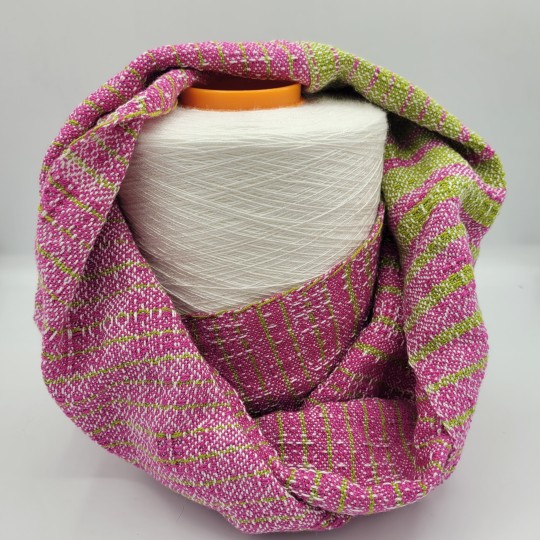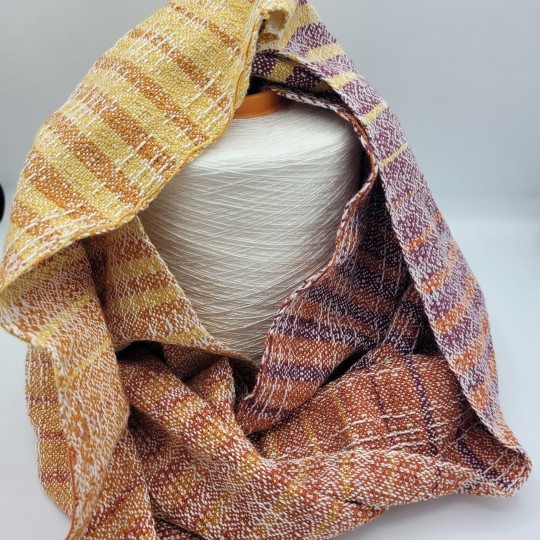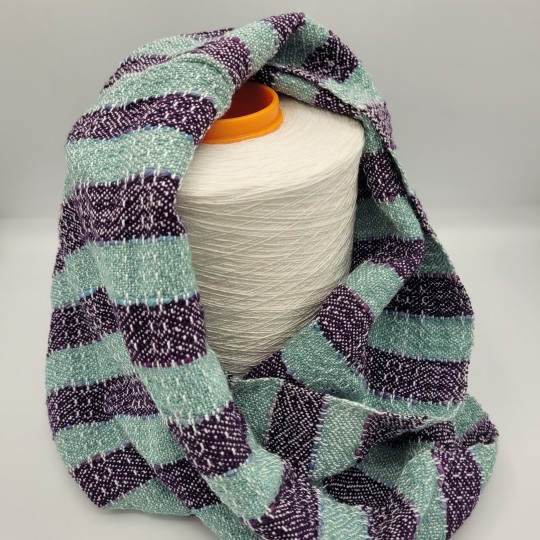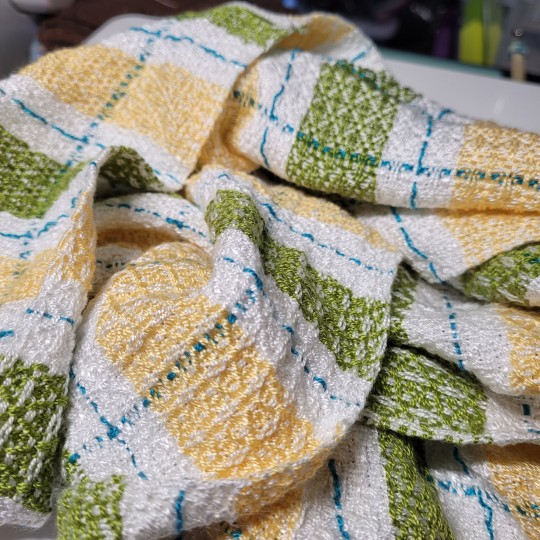#handwoven cowls
Text





I currently don't have a mannequin, so my yarn cone will have to do for displaying these cowls!
98 notes
·
View notes
Photo

A Rugs Journey....!!!! . . . . A rugs journey is unique which starts with a single thread and goes through over 30 stages and 100 sets of hands to achieve it's final look. The tremendous effort and time it takes to complete a rug can range between 20 days to 5 months. . . . . Top 10 and most crucial stages are :- 1. Yarn spinning 2. Designing, mapping & printing of graph. 3. Yarn Dyeing 4. Raw material drying & sorting. 5. Weaving on looms. 6. Clipping & Washing. 7. Drying & Stretching. 8. Binding 9. Hand Carving 10. Final finishing & Inspection. . . . . . . . . . . . . . #artisanrugs #modernrugs #handmade #carpet #vibrant #handcrafted #ruglove #bespokerugs #handwoven #weaversofinstagram #carpets_of_india #persiancarpet #makeinindia #rugs #handknotted #vintage #antique #vintagerugs #traditional #abstract #homeoftheday #reelsinstagram #coigurgaon (at Gurgram, Haryana, Delhi NCR) https://www.instagram.com/p/Cowl-n3r0y9/?igshid=NGJjMDIxMWI=
#artisanrugs#modernrugs#handmade#carpet#vibrant#handcrafted#ruglove#bespokerugs#handwoven#weaversofinstagram#carpets_of_india#persiancarpet#makeinindia#rugs#handknotted#vintage#antique#vintagerugs#traditional#abstract#homeoftheday#reelsinstagram#coigurgaon
0 notes
Text


Whew. *Sigh of relief* Application submitted for a SWEET artist’s residency. 🌞 Now I can focus on getting the random draw for these cozy-funky scarves done.
#weaving#newtribetextiles#textiledesign#handwoven#newmexicoartist#textiles#fiberart#newmexico#wearableart#rawsilk#natural dyeing#naturally dyed#natural dyes#cashmere#merino#silk#seacell#cowl
16 notes
·
View notes
Text

#weaversofinstagram#handweaving#handwoven#handwoventextiles#woventextiles#wool#contemporarycraft#weaving#lambswool#etsymaker#madebyhand#fibreart#textiledesign#niche#fiberart#woven#makersmovement
9 notes
·
View notes
Photo

Ebb Cowl in Aqua ~ ArraTextiles.co.uk/Ebb . . #slowliving #livesimple #livehappy #merino #wool #scotland #aberdeenshire #cozy #craft #bespoke #cowl #blue #inspiredbynature #inspiredbythesea #design #handmade #madeinscotland #handwoven #zerowaste #ethicalfashion #slowfashion #giftidea #smallbusiness #arratextiles (at Arra Textiles)
#wool#slowliving#merino#ethicalfashion#livehappy#slowfashion#scotland#arratextiles#livesimple#cowl#aberdeenshire#inspiredbythesea#bespoke#handmade#blue#craft#handwoven#madeinscotland#cozy#smallbusiness#zerowaste#inspiredbynature#design#giftidea
7 notes
·
View notes
Text
The Ethnic Fabric Of India (Chanderi)
Chanderi is a standard ethnic texture portrayed through its lightweight, sheer floor and great luxurious feel. Chanderi texture is introduced via way of means of weaving in silk and first-rate Zari withinside the normal cotton yarn that results withinside the manufacturing of the glowing floor. The texture received its call from the unassuming network Chanderi in Madhya Pradesh in which traditional weavers exercise the craft of handing over completed sarees in cotton and silk advanced with great zari work. This texture may be ordered into 3 kinds – Chanderi silk cotton, unadulterated silk, and Chanderi cotton. Customarily, Chanderi texture becomes mainly applied in weaving Sarees and Salwar Kameez material. These days, younger girls inclination towards carrying Chanderi sarees. It is one of the must-have matters for every saree expert and has risen because the maximum downplayed Indian ethnic clothing. Chanderi sarees are an excellent choice for summertime season put on simply as for stately dressing, for example, weddings or pujas. Since antiquated occasions, Chanderi metropolis is prominently referred to as a standout among different handloom corporations in India in which Chanderi texture become woven making use of handspun cotton twists and wefts. In any case, the improvement of the feel commenced withinside the Eighteen Nineties whilst weavers withinside the metropolis of Chanderi supplanted handspun yarns with plant frantic yarns. In any case, if legends are to be accepted, Chanderi texture is understood to have its starting course lower back withinside the Vedic Period and become hooked up via way of means of Lord Krishna's cousin – Shishupal. In the 12 months 1910, Chanderi sarees had been disparaged via way of means of the regal institution of Scindia and it becomes all through that length whilst a first rate string subject matter made its nice withinside the cotton muslin saree unexpectedly. Be that because it may, all through the Mughal rule, the ubiquity of this texture arrived at new statures and become the maximum desired choice of sovereigns in India. During the 1930s, Chanderi weavers in Madhya Pradesh discovered Japanese silk. They commenced supplanting the twists of cotton sarees with it and this is the manner the Chanderi silk collection appeared. Formation of unique buttons or issues and the sincere or sheer floor of Chanderi texture are the 2 top attributes that understand it from different handloom textures. The buttons or issues on Chanderi texture are basically handwoven at the handloom, with the usage of needles. Separate needles are applied to make numerous issues. Weavers cowl those issues with gold, silver simply as copper. Themes made making use of chanderi weaving are enlivened from nature and contain Swans, gold coins, natural products, and superb bodies. From traditional issues of blossoms, peacock, lotus to cutting-edge mathematical examples, nowadays you may find out strikingly lovable issues like 'Nalferma, 'Dandidar, 'Chatai', 'Jangla', Mehndi rib haath' and so forth readorning the Chanderi textures. The shading palette of Chanderi sarees is predominately managed via way of means of sensitive pastel tones, besides with evolving times, active blends of crimson and dark, turquoise and naval pressure blue, fuchsia, and white likewise exist. The straightforwardness of the sheer floor is a thrilling detail of Chanderi texture that separates it from one of a kind substances created throughout India. The straightforwardness of this texture is an end result of the usage of an unmarried Feature nature of the yarn. At the factor whilst the paste of a crude yarn isn't always remoted from it, the non-degumming renders a sparkle and simplicity to the finished texture which creates a Feature yarn. Since antique occasions, the Chanderi texture holds a splendid state of affairs withinside the Indian handloom industry. Generally, this texture becomes applied to weave the nine-backyard wraps. Yet, presently, with an aggregate of normal and cutting-edge weaving procedures, Chanderi texture is widely used by fashion originators to make Indo-western dresses, tunics, and tops. The sheer floor of the Chanderi texture desires splendid consideration. It's prudent to launder Chanderi texture to steady the great Zari work. Dry in conceal, abstain from drying in direct daylight.
6 notes
·
View notes
Text

Tired AF but in love with my new handwoven cowl! I’ll be making a ton more in different colors. Handspun weft and tencel warp.
#textiles#fibers#artists on tumblr#pattern#design#cottage core#cottage witch#cowl#handspun#handspun yarn#spinning
3 notes
·
View notes
Text
Some articles about Filipino Weaving
https://narrastudio.com/blogs/journal/the-weaving-of-kalinga
- The design motifs and symbols are inspired from elements in the environment, such as birds and other animals, mountains, and stars.
- Red, for instance, symbolizes bravery while black represents the earth or the ground. Mountain symbols are embroidered in yellow, a color that also symbolizes wealth and fertility.
https://ph.asiatatler.com/life/the-untold-sacred-weaving-of-ifugaos
- Ifugaos and Kalingan people consider weaving sacred
- designs are based off of nature
- appearance of chicken bile or pig butchering by mumbaki helps determine the success of the weaving activity. Performing ritual blesses the cotton and physical condition of the weaver
- weaving is forbidden when a relative dies, unlucky
- bayawak pattern and phyton borders
- star symbol represents abundance and fertility
https://www.slideshare.net/elmerllames/weaving-cordillera-and-region-1-24044317
- ikat style: diamond shapes with red and white stripes. Dyeing process is similar to tye dye where the warp and weft are dyed before being weaved together, resulting in a blurred motif due to the bleeding of the dyes on the resist areas.
- warp ikat vs. weft ikat (more blurred and handmade appearance) vs. double ikat (most precise)
- inabel style: textile made of cotton and other natural fibers that are woven together in pedal frame looms. Abel is the process while Inabel is the outcome.
- Abel is really labor intensive and weavers have to master hand and feet coordination to properly use wooden handloom.
- Inabel patterns are inspired by nature
- Kalinga: dominant red stripes and motifs of geometric patterns as well as nature symbols interlaced with white yellow and black fibers
- Gilamat Ka-in is a wrap skirt that was traditionally woven in Lubuagan but is widely worn all over Kalinga
- Indigo and red symbolise the sky and ground which are the national colors of the Kalinga, with a coin attached as a pendant
- Yellow portions are embroidered and depicts mountains. It also symbolizes wealth. Embroidered plant patterns refer to growth and fertility
- Colorful beads or “bongol” is a part of the native costume, usually worn during fiestas, weddings, and important occassions.
- Ginamat (Kalinga cosatume), Bahag (or G-String og Kalinga)
- Bontoc Style: motifs are geometric shapes of things in environment like men, lizards, mountains, rains, and flowers
- Siniwsiwan: clothing and blankets. Often used for Bahag amongst men and Tapis amongst women
- married women wear ginaspala wanes (belts) with inawin patterns (continuous zig zag patterns)
https://digitalcommons.unl.edu/cgi/viewcontent.cgi?article=1577&context=tsaconf
https://thehinabiproject.org/styled/#:~:text=Textiles%20in%20Mindanao%20are%20predominantly,is%20native%20to%20the%20Philippines.&text=Among%20the%20Moslems%20of%20Mindanao,weavers%20do%20not%20weave%20abaca.
- Textiles in Mindanao are predominantly handwoven from abaca (musa textilis). A member of the banana plant family, it grows naturally and is native to the Philippines
- weaving is done with back strapped looms
- Manuvu: Mandaya, Bagobo, Blaan, Higoanonm and T’Boli weave with Abaca
- Moslems in Mindanao (Magindanaon, Maranaw, and Yakan) continue the tradition of cotton and silk weaving. Muslim weavers do not weave abaca
https://cnnphilippines.com/life/culture/2017/06/27/mindanao-weaves.html
- The woven textiles express both the agricultural roots of each community, as well as a strong non-Christian belief system animated by ancestral and natural spirits
- Kusikus : Wind God motif, thought to shield from furious winds
- Sarimanok: a mythical bird of good fortune (in maranao textiles), the crocodile/lizard is revered for the symmetrical design patterns in its skin, and the Fak is a representation of a frog for its role in agriculture (found in T’Boli T’nalak cloth)
- community’s agricultural roots is also evident in the textiles through patterns depicting tiny diamonds (representing rice grains) and Xs (representing rice mortars)
- Mandaya people’s most popular textiles is called dagmay, which is a handwoven cloth designed with patterns of man and crocodile, for which the mandaya weavers are known for. Geometric and curvilinear forms in yellow, blue, and white yarns, as well as hooks crosses and diamond shapes are the favorite embellishments in the Mandaya’s woven fabrics
- more distinguished women wore red cotton blouses with black sleeves while the common women wore brown and more common women wore brown and black abaca blouses.
- B’laan employ similar weaving styles as their neighbors the Bagobo and T’Boli, producing ikat textiles on abaca or handwoven cotton
- well known for their embroidery and decorative skills, using cross-stitches and outline-stitches to embroider stylized human figures, or when they stitch small disks of mother-of-pearl at regular intervals over the cloth
- Maranao and Maguindanao (people of the lake)
- produce malong which is worn by men and women for a number of purposes. Made by sewing two pieces of sarong cloth lengthwise along its edges to produce a square and can be woven from either cotton or silk. Landap has been noted to be probably the most distinctive malong, which comes on one solid color or two colors arranged in alternating bands.
- the maranaos weave into colorful bands called langkit, consisting of three to four colors with okir designs: scroll, leaf, or vine motifs in abstract forms.
- the sarimanok is a key figure in maranao art
-Yakan
- known for weaving brightly colored fabrics, producing a myriad of textiles with distinct, strongly geometric, repetitive patterns
- bunga sama (based on diamond), sinaluan (small bands of bisected and quartered lozenge shapes), and pussuk labbung (saw-tooth-pattern), and the kabban budi (triangular-rectangular designs)
-Bagobo
- weaving pattern tied to Magandi, a dominant warrior class, identified by the red color of their clothing
- ikat is a prominant fixture in their textiles, characterized with a rhomb design and curvilinear patterns. Their most recognizable motifs are inspired by the natural environment: lightnight, plants, stars, and human figures
- T’Boli
- well known for their t’nalak which is a distinctive abaca cloth that comes in three colors: reddish brown, black, and white. Black and brown colors come from naturally occuring dyes and white is the natural color of abaca.
- well known t’nalak patterns include: bangala (man in house), Klung (shield), sawo (python), nipa g’mayaw (mythical bird), and the tofi (frog); all based in sigul, a zigzag arrangement of triangles or rhombs
- designs for the t’nalak are borne from the weaver’s dreams, and the spirit of Fu Dalo (guardian of t’nalak designs) begins to reside in the cloth at the start of its production, thus warranting extreme care to prevent breakage ofthe yarns while weaving
Tausug
- used to weave cotton and silk textiles from imported yarns.
- habul tiyahian (or labur tiyahiran) is a traditional textile, an embroidered sarong
- well known tapestry weave techniques found in pis (head cloths), tadjung (tubular skirts), and kandit (sashes)
- pis siyabit is characterized by diamond shapes, diagonal crosses, and zigzag motifs inside small squares and rectangles. Predominant colors are pink, orange, and maroon shades (sometimes with a bit of green)
https://artsandculture.google.com/exhibit/the-art-of-the-malong-ayala-museum/owKCDBBzFibtIg?hl=en
- malong used by maranao and maguindanao from mindanao
- can be worn by women as a dress and by men over trousers as a formal wear
- traditionally handwoven by women using a backstrap loom
- silk textiles into wedding saris arrived in Philippines and Indonesia from Gujarat, India. Also known as “patola,” these circular patterns from India were adopted by Maranao weavers
- can either be made of silk for ceremonial occasions or cotton
- grouped into two kinds: intricate design or simple hatching with two colors
- for everyday wear, the malong is. usually made of cotton with simple plaids and stripes
- more elaborate malong made of silk in colors red, purple, and yellow is worn for ceremonial occassions
- in the past, yellow was reserved for local royalty
- now men prefer malong with dark shades of red and magenta and women prefer yellow
- malong andon: considered the most expensive and rarest or the oldest type of the three types of malong. Andon refers to the Patola motif
- malong a landap: characterized by “langkit” or decorative strips of profuse geometric designs, hand-sewn on the malong. This is considered the most popular. Two narrow “langkit” are called “tobiran” while the wider band is called the “lakban”
- can include inscription in “kirim” which is the maranao language written with arabic script
-Malong a ampik: the third type of malong. characterized by a square pattern with lines and cross lines of contrasting primary colors along black and white geometrical shapes
- common motifs on malongs: “pako Rabong” and “matola” are the most common motifs.
- Pako rabong is a growing fern motif
- uses of a malong: used as a cape, cowl or raincoat, bag or sack, used as head gear, curtain
2 notes
·
View notes
Photo

So nervous about my first craft fair at @thefishpond tomorrow that I cant sleep! Instead I'm putting the finishing touches to some of the handwoven Christmas tree decorations which will be for sale, alongside cowls, cushions, make up bags and coin purses. There will be lots of other talented makers there, too, to help with those last minute gifts. So if you're in the area, why not come and say hello? . . . . . . . . . . . #loomlife #weaversofig #TheFishpond #textiledesign #ThunderbugTextiles #MatlockBath #Matlock #Christmas #ChristmasFair #Derbyshire https://www.instagram.com/p/B6AINFFH1xh/?igshid=1oh5kn46xh2b8
#loomlife#weaversofig#thefishpond#textiledesign#thunderbugtextiles#matlockbath#matlock#christmas#christmasfair#derbyshire
1 note
·
View note
Photo

Back in stock ✔️ Greyscale burst scarves, cowls and mini cowls! • • • #fiberboss #cowl #pattern #handwoven #blackandwhite #greyscale #snood #fallfashion #alpaca #silk #sweaterweather #hygge #fallinnyc
1 note
·
View note
Text



Don't you just love how tencel/rayon shines? It has such a lovely drape too!
#this set of cowls came out soooooo squishy#handweaving#handwoven#weaving#cowls#handwoven cowls#fibercraft#handcraft
53 notes
·
View notes
Text
A name has been drawn and the winner emailed for a custom spot.
This video was accidentally shot in slow mo, but it’s actually really funny...wait for it.
🌙 I’m also wearing my new Mushroom Moon Women shirt - https://desertarchaic.com/shop/ -to check out my new shirt designs. 🍄
#newmexicoartist#organiccotton#handwoven#newtribetextiles#tapestry#textiles#cashmere#cowl#weaving#studio
1 note
·
View note
Text

#weaversofinstagram#handweaving#handwoven#handwoventextiles#woventextiles#wool#weaving#contemporarycraft#lambswool#etsymaker#cowlscarf#wovenwoollens#winter wool
25 notes
·
View notes
Photo

Mini Ebb Cowl in Aqua to brighten up a grey morning! Handwoven in Aberdeenshire, inspired by the sea 🌊 Tap the link to shop the collection! . . . #ofquietmoments #theartofslowliving #ethicalstyle #zerowaste #scottishtextiles #shopsmall #indiefashion #arratextiles https://www.instagram.com/p/BqwgX_wHEi5/?utm_source=ig_tumblr_share&igshid=1olzxw6bio9xi
#ofquietmoments#theartofslowliving#ethicalstyle#zerowaste#scottishtextiles#shopsmall#indiefashion#arratextiles
4 notes
·
View notes
Text




Handwoven single loop cowl just added to the shop! Feels like dried lavender fields and long summer days.
#art#weaving#textiles#fibers#artists on tumblr#fiberart#design#handwoven scarf#handwoven#summer fashion#slow fashion#boho scarf#hippie scarf#bohemian scarf#boho fashion#bohemian
3 notes
·
View notes
Text
[vc_row][vc_column][vc_column_text]I put a call out on our Facebook page for mother photos and got a few precious ones. The featured image is of me with my Mother. She taught me first grade when we were living in Brazil. This would have been in 1968.
Jannelle of Something Else Studios had two special ones, the first known one of when she was a baby and on her wedding day.
“I don’t recall this day but it’s one of the earliest picture of mom and me. I didn’t even know about this picture until my sibling and I put together a video Memorial of Mom’s life for her funeral and I was told this image was her with me.” -Jannelle Olmstead
“Mom and me at my wedding.” -Jannelle Olmstead
One of Jannelle’s bags:
Something Else Studio – The Frog Prince And Sleeping Beauty Large Tapestry Textile Art Hand Painted Big Messenger Bag
Jannelle’s website
Jeffrey Elliott posted a small, but lovely photo of his Mom:
“This is my mom, age 35 in 1962. I was 4. At the time I didn’t realize just how beautiful she was, since what 4 year old (or even 15 year old) is gonna realize that their mom is pretty. But I realize now that she was. She’s been gone for 28 years. Happy Mother’s Day.” – Jeffrey Elliott
One of Jeffrey’s beautiful hand blown bowls:
Elliott Glass Art Closed Bowl blue and white
Jeffrey’s shop on Etsy
Janice Zindel posted a sweet photo of her and her Mom. Her mother looks like a teenager! Mother and child look so happy, full of life!
“My mother and I a month before my fourth birthday, Sept. 1954. She was a wonderful mother, and had many gifts including painting.” -Janice Zindel
An indigo scarf woven and dyed by Janice:
Shuttle Works Studio Indigo Handwoven Cowl
For better or worse, our early years have a great impact on how we live our lives out as adults. For some, the road is rocky and hard while for others, it is filled with adventure and a thirst for knowledge. Both of my parents encouraged my creative side and I am forever indebted to them. We carry our memories with us, treasuring those hands which held us with so much love and encouraged us to make things and to appreciate beauty.
Happy Mother’s Day to all of you!
Some treasures from our Market:
[/vc_column_text][/vc_column][/vc_row][vc_row][vc_column][product_category per_page=”12″ columns=”3″ orderby=”rand” order=”” category=”pink”][/vc_column][/vc_row]
For the Love of our Mothers! I put a call out on our Facebook page for mother photos and got a few precious ones.
1 note
·
View note